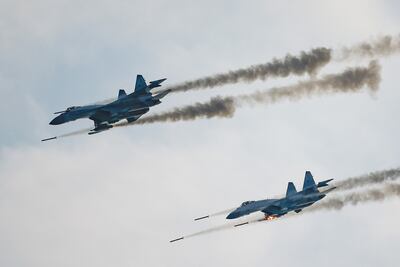Ukraine urgently needs F-16 fighters to protect its skies before it runs out of air defence ammunition, a senior air force officer has said.
Colonel Yuri Ihnat said that the outlook was “very dangerous”, and Ukraine’s cities are vulnerable to Russian bombing strikes similar to those that devastated towns in Syria.
A recent leak of top-secret US papers disclosed that Ukraine would run out of its Soviet-era Buk and S-300 surface-to-air missiles by early May.
“The situation is very dangerous indeed,” Col Ihnat, spokesman for the air force, told The Times.
“If we lose the battle for our skies, the consequences will be critical. The Russians will smash every city just like they did in Syria. Our nuclear power stations will be vulnerable, too. And we will struggle to protect our frontline troops.”
Kyiv’s air defences, both from its fighter pilots and surface-to-air missile systems, repelled Russia’s air force during the invasion last year, forcing it to fire precision missiles from within its airspace rather than risk being shot down.
But now Russian jets have begun dropping FAB-500 bombs modified with GPS navigation, using the highly explosive 500kg payloads that flattened Syrian cities.

“They have gone from dropping a few a day to around two dozen every day along our entire line of contact,” Col Ihnat said. “They are dropped from Su-35 and Su-34 jets outside the range of our air defence system, then travel 40 miles to their target.
“This is a serious threat and, at the moment, we have no equipment to respond. The only way is with systems like the Patriot or modern fighter jets like the F-16. That is why we are begging our allies to give us them now.”
The Pentagon leaks suggested that Ukraine’s missile stock will run out on May 2, leaving most cities outside of Kyiv vulnerable, as well as four nuclear power plants.
At the start of this year, the US promised two Patriot anti-aircraft batteries plus training for their crews but these have apparently not yet arrived.
While the F-16 has been operational since 1980, its advanced models are still highly regarded as is its ability as an air supremacy fighter. About 4,000 are understood to be in Nato stocks.
“F-16s would change the picture of this whole war,” Col Ihnat said. “They would not just be effective to defend the sky but to defend the sea. They could win this war.”





